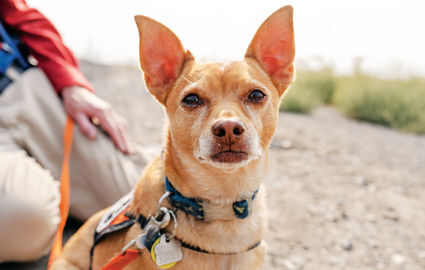Getting through the heat wave
Life with Pepe
July 17, 2021
Life with Pepe this summer has been very different for both Pepe and I as we are dealing with an unprecedented, for the Tehachapi area, heat wave.
Tehachapi is a true "four seasons" mountain community. At 4,000 feet elevation, on the cusp of the Mojave Desert, annual ambient temperature changes are normal and not a big issue for me. Much of my working life had been spent outside and I learned to adjust my routine work duties to fit the daily forecast - bundle up as need for the cold; strip to shorts and T-shirt for the heat. The 2021 summer has brought several 100 degree days to the area. Do you think this is hot? Well, I have a story for you.
The last year of my working life, prior to retirement, was spent as a Contract Wastewater Treatment Plant Operator for a Resort in Death Valley. The contract was for only a few months, originating in February and expiring in November. March through October is the "hotter than Hades" season in Death Valley. For about six-weeks, during summer months, the low temperature will not go below 100 degrees Fahrenheit; mid 120s is common during the day. Some days the high temperature would exceed 130 degrees. Unofficial temperature ranges but is very close to accurate.
Since most of my work was not physical and required only monitoring and testing; keeping an eye on things; dealing with correcting problems BEFORE they happened and compliance with regulatory paperwork, I could adjust my working hours to fit the requirements of the job. Wastewater (sewage) flows 24/7/365.

My routine work day started at midnight; the start of the coolest part of the morning in Death Valley. I lived on-site, one quarter mile from the plant. Leaving Pepe to finish his night's sleep, I used a golf cart to drive to the plant to check things out during the midnight hour and do some minor maintenance. Returning home a couple hours later for a predawn "crash." Just before daylight I would roll Pepe out and, with morning coffee in hand, we would walk to the plant. This was our primary exercise for the day. We would take the long way to the plant, extending our morning walk to about a mile.
The early morning, daylight-breaking routine was spent doing whatever physical work was required; returning home for a shower and breakfast. Mid-morning we would drive back to the plant to check things out. Unless an alarm had sounded there was little to do late morning. We would have an early lunch and sleep for a couple of hours. Mid-afternoon, before an early dinner, we would sometimes take a short walk to the plant for a routine check to be sure everything was functioning as it should be.
Working with and in wastewater requires constant attention to personal hygiene. Showering and washing laundry was a daily pre-supper routine for me. After our early supper we would watch a movie or read for a bit. Pepe, of course, would have another long nap. Then an early bedtime in preparation of another "midnight run."
That was three-years ago and now locked down during a raging world-wide pandemic, I find that the "Death Valley routine" is still a pretty good routine for Pepe and I during this hot summer weather. Up at midnight for a "necessary trip," then, since I'm wide awake, have a "mid rats" (abbreviation for midnight rations – a Navy term for the light meal that the midnight watch standers are given). Back to bed for an hour or so, then up for the day doing whatever physical work that's needed during the early morning hours. Then a mid day nap, perhaps a movie, early supper and early to bed. Resting up for the next day's routines which would probably start at midnight.
There are a few variations, of course. Recently Pepe and I took the Kern County Bus to Bakersfield; then connected with a Bakersfield City Bus to a clinic for a doctor's appointment. Total price for transportation was less than $5 bucks; connecting schedules were convenient. Public transportation is such a blessing – especially for a solo traveler. Of course, Pepe travels free and is a great companion. He seems to enjoy the views since when we travel it is one of the few times when he will willingly sit on my lap for an extended period.
Pepe is a small, male Chihuahua mix, 8 years old, that accompanies Steve everywhere. Steve has a hearing disability that allows him to have an ADA Certified Service Dog.



